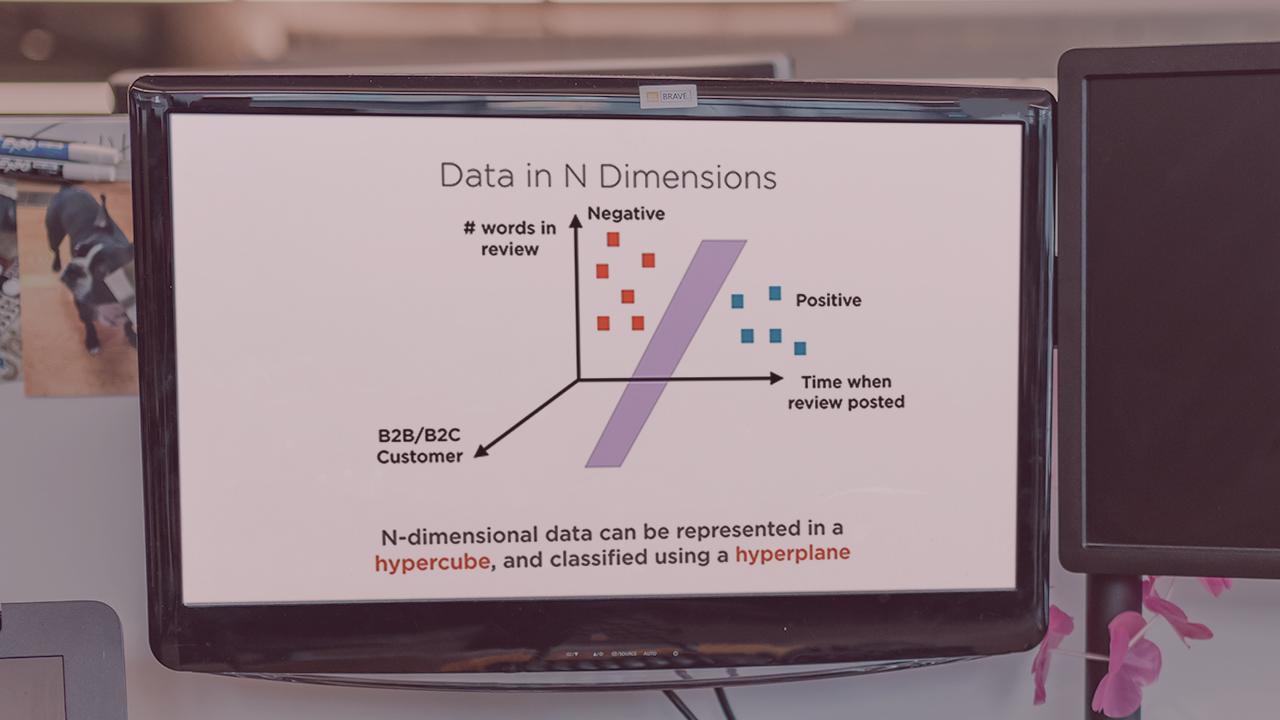- Course
Designing a Machine Learning Model
This course covers the important differences between various canonical problems in machine learning, as well as the considerations in choosing the right solution techniques, based on the specifics of the problem you are trying to solve and the data that you have available.

- Course
Designing a Machine Learning Model
This course covers the important differences between various canonical problems in machine learning, as well as the considerations in choosing the right solution techniques, based on the specifics of the problem you are trying to solve and the data that you have available.
Get started today
Access this course and other top-rated tech content with one of our business plans.
Try this course for free
Access this course and other top-rated tech content with one of our individual plans.
This course is included in the libraries shown below:
- AI
- Data
What you'll learn
As Machine Learning explodes in popularity, it is becoming ever more important to know precisely how to frame a machine learning model in a manner appropriate to the problem we are trying to solve, and the data that we have available.
In this course, Designing a Machine Learning Model you will gain the ability to appropriately frame your use-case and then choose the right solution technique to model it.
First, you will learn how rule-based systems and ML systems differ and how traditional and deep learning models work. Next, you will discover how supervised, unsupervised, and reinforcement learning techniques differ from each other. You will learn how classic supervised learning techniques such as regression and classification complement classic unsupervised techniques such as clustering and dimensionality reduction. You will then understand the assumptions and outcomes of these four classes of techniques and how solutions can be evaluated.
Finally, you will round out your knowledge by designing end-to-end ML workflows for canonical ML problems, ensemble learning, and neural networks.
When you’re finished with this course, you will have the skills and knowledge to identify the correct machine learning problem setup, and the appropriate solution technique for your use-case.
Designing a Machine Learning Model
-
Version Check | 16s
-
Module Overview | 1m 13s
-
Prerequisites and Course Outline | 1m 49s
-
A Case Study: Sentiment Analysis | 6m 50s
-
Sentiment Analysis as a Binary Classification Problem | 2m 19s
-
Rule Based vs. ML Based Analysis | 6m 34s
-
Traditional Machine Learning Systems | 4m 28s
-
Representation Machine Learning Systems | 2m 16s
-
Deep Learning and Neural Networks | 4m 37s
-
Traditional ML vs. Deep Learning | 2m 59s
-
Traditional ML Algorithms and Neural Network Design | 4m 42s
-
Module Summary | 1m 28s
-
Module Overview | 2m
-
Regression Models | 2m 10s
-
Choosing Regression Algorithms | 4m 21s
-
Evaluating Regression Models | 5m 10s
-
Types of Classification | 3m 49s
-
Choosing Classification Algorithms | 3m 23s
-
Evaluating Classifiers | 4m 16s
-
Clustering Models | 5m 14s
-
The Curse of Dimensionality | 5m 22s
-
Dimensionality Reduction Techniques | 2m 58s
-
Module Summary | 1m 27s
-
Module Overview | 1m 14s
-
Install and Set Up | 1m 47s
-
Exploring the Regression Dataset | 2m 57s
-
Simple Regression Using Analytical and Machine Learning Techniques | 4m 53s
-
Multiple Regression Using Analytical and Machine Learning Techniques | 2m 1s
-
Exploring the Classification Dataset | 3m 14s
-
Classification Using Logistic Regression | 4m 21s
-
Classification Using Decision Trees | 3m 8s
-
Clustering Using K-means | 6m 49s
-
Dimensionality Reduction Using Principal Component Analysis | 4m 24s
-
Dimensionality Reduction Using Manifold Learning | 5m 17s
-
Module Summary | 1m 22s
-
Module Overview | 1m 5s
-
Classification Using Hard Voting and Soft Voting | 5m 17s
-
Exploring and Preprocessing the Regression Dataset | 3m 11s
-
Regression Using Bagging and Pasting | 4m 31s
-
Regression Using Gradient Boosting | 4m 8s
-
Regression Using Neural Networks | 7m 51s
-
Summary and Further Study | 1m 44s

